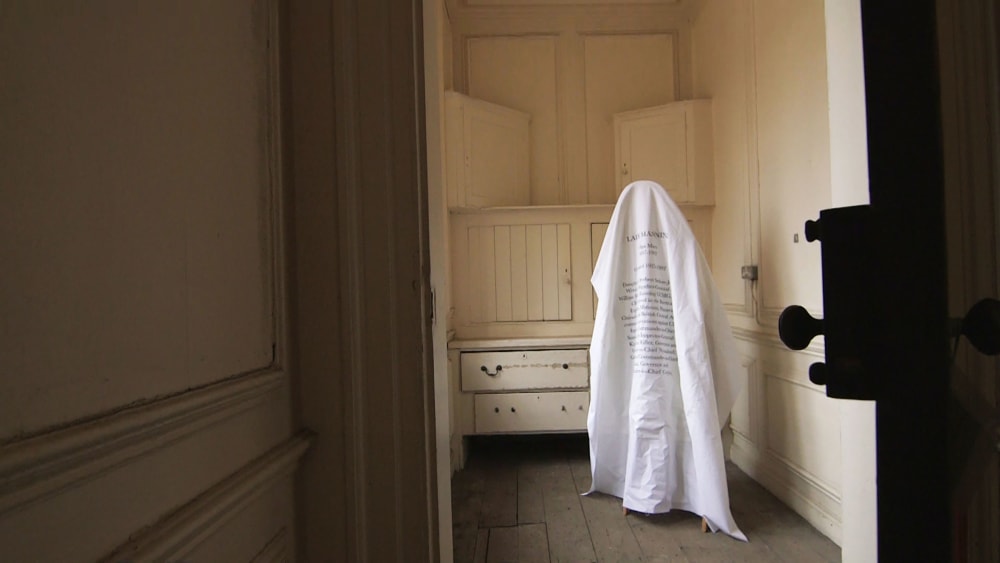Throughout Show Two: Design, we’re celebrating the work of our graduating students and asking them to share the process behind the practice
For her final graduating project from MA Narrative Environments, Diane Dwyer told the story of the abandonment of women’s perspectives in history within their abandoned living spaces.
Abandoned Spaces
In a state of decomposition, an abandoned space is an amalgamation of the past, present and future. The past is evident in the physical elements of the space like Georgian moulding and 1950s wallpaper. The space is experienced in the present. The pattern of decay can be extrapolated into the future.
Apartment 23
My project began with the location. Apartment 23 is a large set of rooms located at the front of Hampton Court Palace. From 1766-1992 it was used as a grace and favour residence, occupied by subjects (and their dependents) who had performed an act of service to the crown. After the last resident vacated, the rooms were left as they were and have fallen into disuse. Being in apartment 23 feels like stepping out of the flow of time. I was fascinated by the creative potential of that feeling.
Michel Foucault's Heterotopia
Foucault's theory of heterotopias says that there are certain places that operate under a different set of rules than our daily surroundings. He gives the examples of hospitals, cemeteries, hotels, boarding schools. These are all places of transformation where your experience of time and place are challenged and you often come out with a new perspective. I was interested in this concept because I felt that Apartment 23 had heterotopic elements and I wanted to change people's perspective on the way our history shapes our present.

Women and forgotten histories
Upon researching the residents of Apartment 23, I found that 8 out of 9 of them were women, but that their lives had been reduced to their dates of birth and death and their roles as daughters and wives of men. Reading their biographies felt similar to standing in one of the empty rooms of their apartment; both had once been full of life but were now lost to time, reduced beyond imagination. It was this relationship between women’s abandoned stories and abandoned living space that gave the project its foundation.
Representation is an empowering force of which women are deprived due to the patriarchal filter on recorded history. For example, only 2.7% of all statues in the UK are of historical, non-royal women. To put this into perspective, there are twice as many statues of dogs in Edinburgh as there are of women. Pairing this issue with the melancholy atmosphere of apartment 23 provided a unique vantage point from which to reassess our understanding of how history is recorded. By making people aware of one way in which inequality is perpetuated, there is potential to create change in the future.
The final design is an installation throughout the first floor of apartment 23. Visitors encounter cloth-draped representations of the former residents. These cloths contain the residents’ patriarchal biography. Visitors are encouraged to remove these sheets and reveal messages from each resident, thus becoming active in challenging the one-sided historical narrative. In a symbolic action, they discard the patriarchal historical account and allow the women’s perspectives to be considered, unfettered.
Diane Dwyer is shortlisted for the MullenLowe NOVA Awards. Her work was shown at Central Saint Martins during Show Two: Design, 19-23 June.



